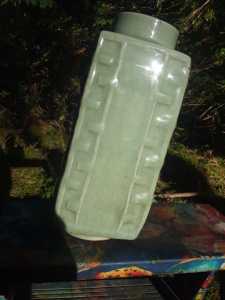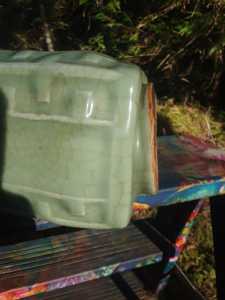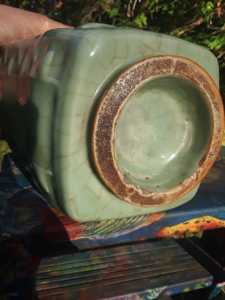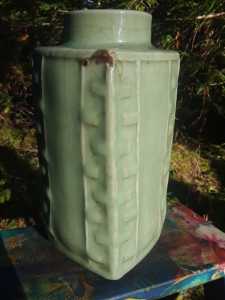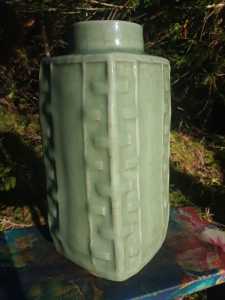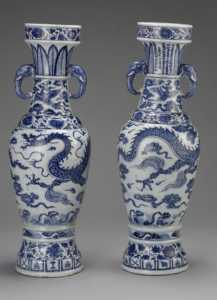The Chinese and Asian Art Forum. For Fans, Collectors and Dealers.
 Basic Rules For the BidAmount Asian Art Forum: Talk about whatever you want. You can even discuss and offer things that are for sale if they are authentic. Maximum image file size per post is 2 MB. Images of 700pxl x 700pxl are optimal if saved at a medium resolution. Be respectful of others and enjoy yourself. Click the YouTube link for a brief tutorial on using the forum. You can also EMBED Videos by cutting and pasting from You-Tube, Vimeo etc.
Basic Rules For the BidAmount Asian Art Forum: Talk about whatever you want. You can even discuss and offer things that are for sale if they are authentic. Maximum image file size per post is 2 MB. Images of 700pxl x 700pxl are optimal if saved at a medium resolution. Be respectful of others and enjoy yourself. Click the YouTube link for a brief tutorial on using the forum. You can also EMBED Videos by cutting and pasting from You-Tube, Vimeo etc.
NOTE: To post an item or add a new post, click open the category title from the FORUM LIST, and CLICK the Blue ADD TOPIC button.
Always wondered the age of this Cong vase I picked up at a local antique shop. It was listed as just a old pottery vase and
swooped it up for 45 bucks. The vase itself
has a significant lean to 1 side but holds itself up quite nice. Looks like the foot/base warped in the kiln and rested against a side wall our another vase as there is a blister in the glaze as well. The design and shape is unusual as the ribs are not of a typical style. The glaze is quite lovely and is very smooth with tiny air bubbles all through it. Not sure if this is classic 18th century export? Our maybe even late Ming dynasty? Our just another replica/fake?
It looks like a good Longquan piece from the Ming period but collapsed during the firing. What is unusual is I read they would have destroyed such a piece but it looks ok and I see no issue with it.
I would Find or make a wooden stand that would fit the vase to a correct standing position. You could work on a deeper wooden stand by digging out on one side only to make the right angle.
David Coles
How very interesting... Never seen one like this before.
Unfortunately I know very little about these.
Mark
I am not qualified to say for certain I have to go by my books but the crackle looks ok. You have to understand monochromes are hard to date. I feel there are only a few people on this site that could say almost. The lean is concerning plus the foot grit is also. But it has potential. I would suggest and outside evaluation like Peter. These are still copied as we speak there are times of reproduction from Song to current. So it’s not as easy as a export to guarantee.
There is no doubt that this is a forgery.
The form, cong, has been held in the highest esteem for thousands of years, since the Western Zhou, as a icon of heaven and earth.
The possibility that such a deformity would be permitted to remain intact from the Ming, is unimaginable.
@lotusblack thanks! My hunch is its early 18th century. I have been wrong so many times I just assume I am always buying fakes and reproduction at antique stores. But each time I learn what not to buy and so it goes.
@greeno107 I agree with what you are saying. But with everything else a worker taking a defective piece home is not out of the question.
@lotusblack But with everything else a worker taking a defective piece home is not out of the question.
Brian, These kilns didn’t operate like a bakery in the Ming dynasty … ‘workers’ didn’t get to take home the burnt cookies at the end of the day.
Like most trades, apprentices worked under masters, and if mistakes occurred, they were disposed of.
The physical deformity alone that prevents the vase from standing brings into question how such a piece could have survived 400 years.
The physical qualities of the vase do not warrant discussion, but at quick glance, the alternating tooth design is unknown to me as well.
@greeno107 what is your best guess of age in your opinion?
@lucky_sun123 Hi Jesse,
I like your vase.
My first impression looking at your pictures is an art school or pottery class project from the 20th century that did not quite come out properly.
I went to art school in the 20th century.
Andrew
Like Tim, I also can't recall having seen that pattern before. I have just been looking to see if anything comes up, but I have found nothing with the alternating style yours has. I find the foot rim strange, too.
As for the lean, it would be unusual for the piece to get through, but I guess it is not impossible depending, I suppose, on when it was made and it does seems an odd defect to deliberately fake, but if it is a kiln collapse on a copy, fakers might well send it out anyway.
@lucky_sun123 How old? 1970’s or newer, and I suspect entirely modern (last 10 years).
The history of porcelain making in China was one one of strict standards, and life long apprenticeship.
A firing crack, or faulty glaze, or a minor collapse resulting in a slight tilt on export wares and minyao (common domestic wares) might be explainable because the standard of quality would be fairly low.
However, objects made for upper society were done by commission, they were expensive, the standard were extremely strict, and a kiln’s reputation would be put into question for failing to deliver an exemplary piece.
A collapsed piece of this degree would have had to been snuck out (essentially stolen), at the risk of loosing ones life. No apprentice would take such a risk, and a master would never permit such a failure to remain whole.
These days, forgers are deliberately putting faulty pieces into the marketplace because it seems Westerners are embracing the false notion that a faulty piece could be a genuine piece that had been overlooked by Western collectors during the early 20th c due to the piece’s obvious faults.
Nonsense. The imperfection only serves as bait to lower your guard, and draw your attention from the other flaws and indications that the piece is modern.
This fantasy version of Chinese potters jumping into the fire due to an imperfect bowls or vases is just fantasy and quite fictional. The Chinese recycled everything this pot looks to have been tipped in the Kiln. I think Tim is right a comparable needs to be found with the same boarder and the foot is strange. But the ideal an imperfect vase was not savaged is highly improbable there were many other workers in the kiln than apprentice and potters. Here is a defective pair these should had been destroyed. Well at least one of them.
Thanks for visiting "The BidAmount Asian Art Forum | Chinese Art"
If you sell on eBay, or have a shop feel free to post images and descriptions and links.
Check back often for discussion about the latest news in the Chinese art and antique world. Also find out about the latest Asian art auctions at Sotheby's, Christie's, Bonhams and Tajans.
Auction results for: fine porcelain, ceramics, bronze, jade, textiles and scholar's objects. As well as Japanese, Thai, Vietnamese and other Asian cultures.
Thank you,
Peter Combs
Topics and categories on The BidAmount Asian Art Forum | Chinese Art
Kangxi vases, Kangxi dishes and chargers, Kangxi ritual pieces, Kangxi scholar's objects, Qianlong famille rose, Qianlong enamels, Qianlong period paintings, Qianlong Emporer's court, Fine porcelain of the Yongzheng period. Chinese imperial art, Ming porcelain including Jiajing, Wanli, Xuande, Chenghua as well as Ming jades and bronzes.
The BidAmount Asian Art Forum | Chinese Art
A free Asian art discussion board and Asian art message board for dealers and collectors of art and antiques from China, Japan, Korea, Thailand, Cambodia, Vietnam and the rest of Asia. Linked to all of the BidAmount Asian art reference areas, with videos from plcombs Asian Art and Bidamount on YouTube. Sign up also for the weekly BidAmount newsletter and catalogs of active eBay listing of Chinese porcelain, bronze, jades, robes, and paintings.
The art of calligraphy - and for the ancient Chinese it certainly was an art - aimed to demonstrate superior control and skill using brush and ink. Calligraphy established itself as one of the major Chinese art forms during the Han dynasty (206 BCE - 220 CE), and for two millennia after, all educated men were expected to be proficient at it.
The Museum’s collections of Asian art span nearly five millennia and encompass the cultures of China, the Himalayas, India, Japan, Korea, and Southeast Asia. In 2007, the Museum launched an initiative to create dedicated galleries for the collection, beginning with a gallery for the arts of Korea ...
Chinese art is full of symbolism, in that artists typically seek to depict some aspect of a totality of which they are intuitively aware.
China Online Museum is the finest online museum of Chinese art. It features Chinese calligraphy, painting, ceramics, bronzes, carving, and other artworks.
Chinese Ceramics & Works of Art. Overview Upcoming auctions Contacts Auction results ... Christie’s sales of Chinese ceramics and works of art showcase centuries of Chinese history. Held throughout the year in London, New York, Paris and Hong Kong, they attract a wide audience of collectors and connoisseurs vying for pieces as diverse as ...
Explore Asian Art Week. Contact the Specialist Department. Chinese Paintings ... Senior Specialist, Head of Sale. [email protected]. Tel:+1 212 641 5760. Bid in-person or online for the upcoming auction:Fine Chinese Paintings on 10 September 2019 at New York. Bid in-person or online for the upcoming auction:Fine Chinese Paintings on 10 ...
Discover an abundance of must-see art from all corners of a vast continent at Christie’s NY Asian Art Week. From contemporary classical and Chinese paintings to works with exemplary provenance from the Art Institute of Chicago, our Rockefeller Paza galleries will be full of ancient treasures and contemporary masterworks in a salute to the vibrant arts of Asia.
Sold to benefit The Art Institute of Chicago’s Asian Art Acquisition Fund, the sale features 84 lots with a focus on Ming and Qing porcelains, and offers a rare insight into the taste for collecting Chinese ceramics and works of art in the Midwest from the end of the 19th century through the 1980s. Highlights include two Wanli wucai garlic-head vases, a Qianlong mark and period, blue and ...
Specialist, Chinese Paintings, Christie's London Dr Malcolm McNeill is a Specialist in Chinese Paintings at Christie’s, based in London. He previously worked as an assistant curator of the Chinese collections and the Victoria and Albert Museum in London, as a researcher at the British Museum, and as a translator and tour guide at the National Palace Museum in Taipei.
The Christie's Education 2020 Conference: The Chinese Art Market 18 Jun 2019 Christie’s Education is delighted to announce our first international academic conference in Asia which will take place in Hong Kong from 26-27 November 2020 at the Hong Kong Convention and Exhibition Centre and will run in parallel with Christie’s Hong Kong Autumn Auctions.
The summer Chinese Art sale in Hong Kong will feature works of art from several private collections, including Qing porcelains and textile from the collection of the legendary Chinese art dealer A. W. Bahr (1877–1959), fine gilt bronze Buddhist sculptures from an old Hong Kong collection, an East Asian collection of Qing dynasty wine cups and jades, and a Japanese collection of Song ceramics ...
Sotheby's Chinese Works of Art Department holds two auctions each year in London, New York, Hong Kong and Paris.
Chinese Art - View Auction details, bid, buy and collect the various artworks at Sothebys Art Auction House.
With more than 340 Chinese works of art dating from the Neolithic to the Republic periods, highlights of this sale include a selection of Qing Imperial monochromes from the collection of Arnold and Blema Steinberg, early ceramics from the Art Institute of Chicago and Chinese porcelain and works of art from the collection of Henry Arnhold.
Results: Sotheby's Asia Week achieved $52.4 million in six strong auctions, exceeding pre-sale estimates. With 76.5% of lots sold and 60.3% of lots surpassing high estimates, the Asian art sales at Sotheby's indicate continued collector interest in the finest works of art from China, India and and the Himalayas.
Today's sale of Important Chinese Art will proceed as planned with sessions at 10 AM and 2 PM EDT. Sotheby's will be monitoring the weather conditions throughout the day and will be available to coordinate alternative bidding options should conditions make it difficult for clients to attend the auction in person.
Bonhams Chinese Art department is renowned for offering the finest works of art representing the richness and breadth of China's artistic heritage, particularly Imperial porcelain, white and spinach green jades, cloisonné and Buddhist art. Specialised international auctions are held globally, including London, Hong Kong and San Francisco.
Bonhams : Chinese Works of Art We use cookies to remember choices you make on functionality and personal features to enhance your experience to our site. By continuing to use our site you consent to the use of cookies. Please refer to our privacy and cookie policies for more information.
Bonhams Fine Art Auctioneers & Valuers: auctioneers of art, pictures, collectables and motor cars. We use cookies to remember choices you make on functionality and personal features to enhance your experience to our site. By continuing to use our site you consent to the use of cookies. ... Chinese Art (US) General enquiries
Bonhams : Fine Chinese Art We use cookies to remember choices you make on functionality and personal features to enhance your experience to our site. By continuing to use our site you consent to the use of cookies. Please refer to our privacy and cookie policies for more information.
Bonhams Fine Art Auctioneers & Valuers: auctioneers of art, pictures, collectables and motor cars Bonhams : Asian Art We use cookies to remember choices you make on functionality and personal features to enhance your experience to our site.
Bonhams are international auctioneers of fine Chinese and Japanese art. We specialise in rare Imperial and Export Chinese ceramics and works of art, as well as Japanese ceramics, fine and decorative works of art from the Neolithic Period to the 20th century. View on map
Bonhams Fine Art Auctioneers & Valuers: auctioneers of art, pictures, collectables and motor cars. We use cookies to remember choices you make on functionality and personal features to enhance your experience to our site. By continuing to use our site you consent to the use of cookies. ... Asian Art Bonhams. Work. 22 Queen St.
